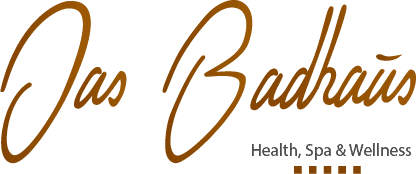
The Wiesbaden spa: A fountain of youth for body & soul
Wiesbaden’s thermal water comes from the hot interior of our Earth. It flows upward from a depth of 2,000 meters and still has a temperature of over 152 degrees Fahrenheit once at the surface. It is one of the hottest springs in Europe and is rich in dissolved mineral substances such as sulfur, carbonic acid and radon.
This unique water which we draw directly from the Kochbrunnen is the basis for a variety of baths and spa treatments at the Badhaus spa. With approx. 86-degrees-warm water, the minerals are absorbed through the skin with several health-promoting benefits: stress hormones, blood pressure and the heart rate are lowered – similar as to with floating, the body enters a state of a complete relaxation. The peaceful and pleasant atmosphere in our historical spa enhance this.
In combination with a relaxing massage the thermal baths can also do wonders for muscle tension or joint problems. With our masseurs and therapists, you are in the very best hands.
So give your body and mind a little break – maybe for a day spa visit or a relaxing wellness weekend at our thermal spa with an overnight stay at the RadissonBlu Hotel Schwarzer Bock.
Going back to Roman times, the thermal water in Wiesbaden was used for therapeutic purposes. Due to its high mineral content, it is ideal for therapeutic use for a variety of illnesses:
- Skin problems: Our thermal baths with their high sulfur content are ideally suited for alleviating skin disorders such as acne, psoriasis or neurodermatitis.
- Cardiovascular disorder: Carbonated thermal water is used to stimulate the circulation for cardiovascular problems.
- Rheumatism, muscle stain and diseases of the musculoskeletal system: The particularly high salt content of Wiesbaden's thermal water has positive effects on muscle and joint problems. In our thermal pool you can feel the buoyancy of the water and the slight floating state, which makes it easier for you to move.
- Stress reduction: Studies prove it: A bath in warm thermal water lowers levels of the stress hormone cortisol and increases a sense of well-being. It is now often recommended to treat burnout.
Speak with your doctor or our therapists.
The Kochbrunnen in Wiesbaden is the best-known thermal spring in the city. This sodium-chloride spring was the center of the Wiesbaden drinking cure in the 19th century. The name “Kochbrunnen” (boiling fountain) refers to the water temperature of over 150 °F.
The spring at the Kochbrunnenplatz is first mentioned in 1366 as Bryeborn (Brühborn) and 1536 as Syedenborn (Siedeborn). The Kochbrunnen is an artesian spring that is, however, captured through a bore today. The productivity is around 360 liters/minute. The Kochbrunnen water has a temperature of around 150 °F when exiting, it smells faintly of hydrogen sulfide and tastes strongly salty. It is clear but turns turbid yellowish after 24 hours exposed to the air. The high carbonation initially contains the hardness in solution but once the water loses its carbonation calcium carbonate results. The oxidizing metals color the sinter, the mineral deposits, a red color.
The Kochbrunnen is one of the primary springs in Wiesbaden. Only a small water amount supplies the drinking spot at the Kochbrunnen pavillion and the “Kochbrunnenspringer.”
Some of the Wiesbaden grand hotels have grouped themselves around the square Kochbrunnenplatz and the neighboring Kranzplatz: for example, the oldest hotel in Germany, the “Schwarzer Bock” founded as early as 1486, the former “Palasthotel” – the first hotel with a telephone in the room – and “Hotel Rose” which has been housing the Hessian State Chancellery since September 2004.
Between the former foyer on the western edge of the square and the Kochbrunnen pavilion, there was the angular drinking hall, which was destroyed in the Second World War.
The Kochbrunnen water that springs right across from the Badhaus is used for a variety of treatments in the spa. You can drink the warm curative spring water directly at the Kochbrunnen square.
The pool is filled with water from the Kochbrunnen spring. Baths with the Kochbrunnen water in traditional stone tubs are especially popular.

